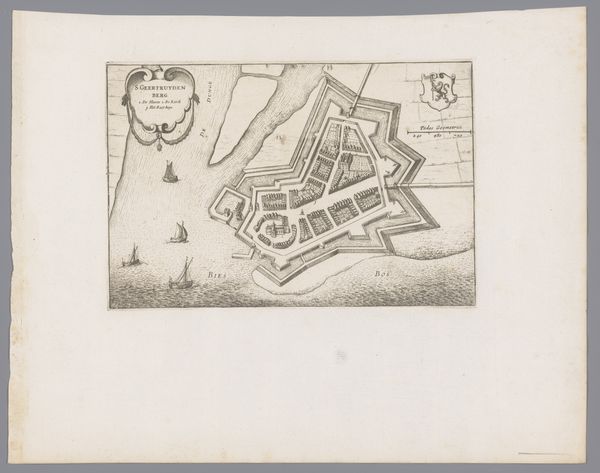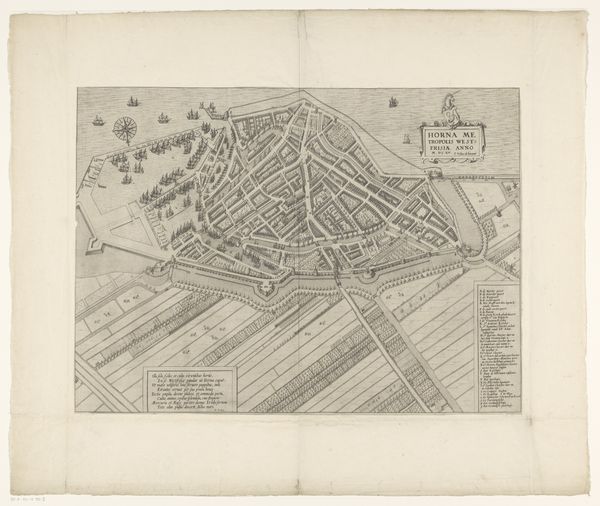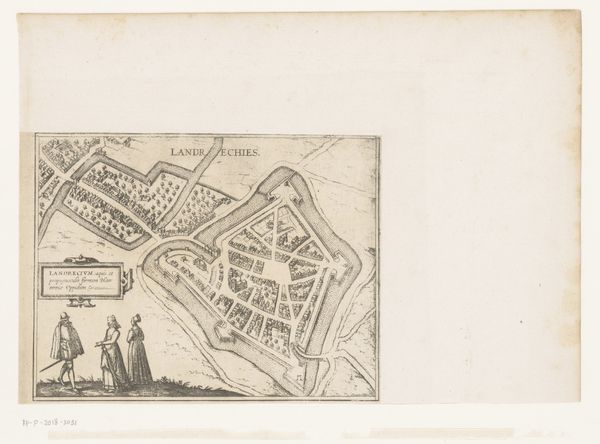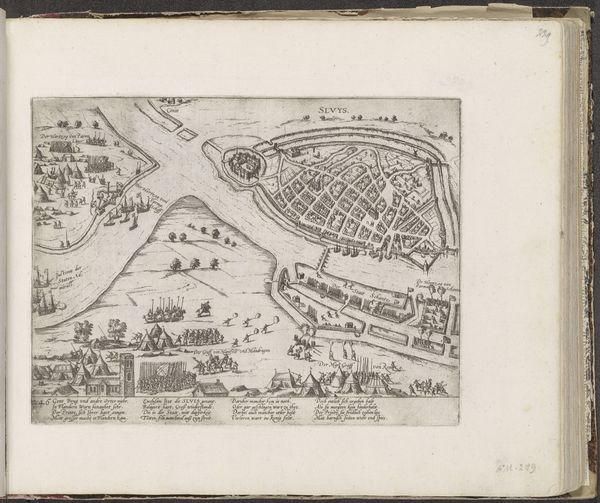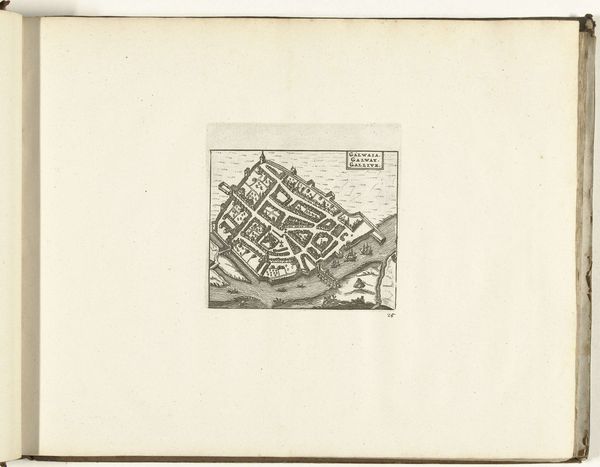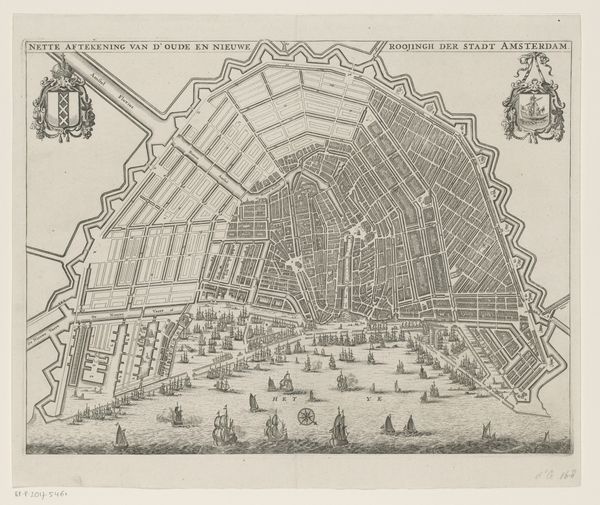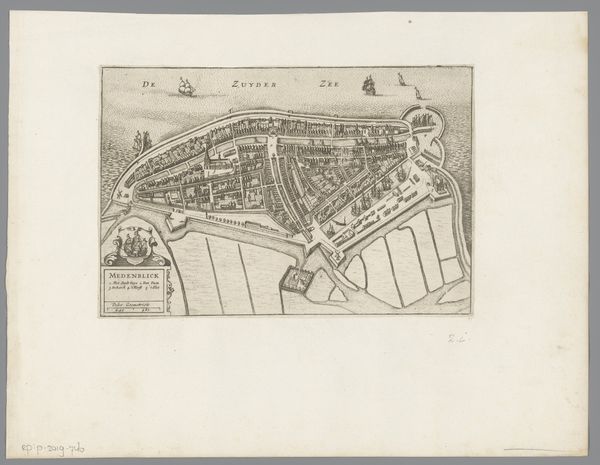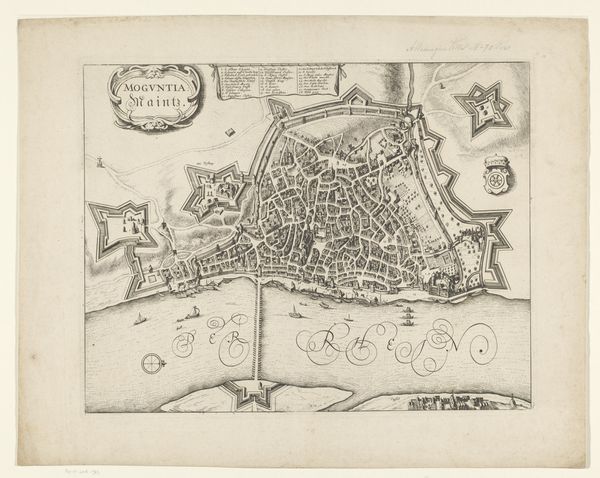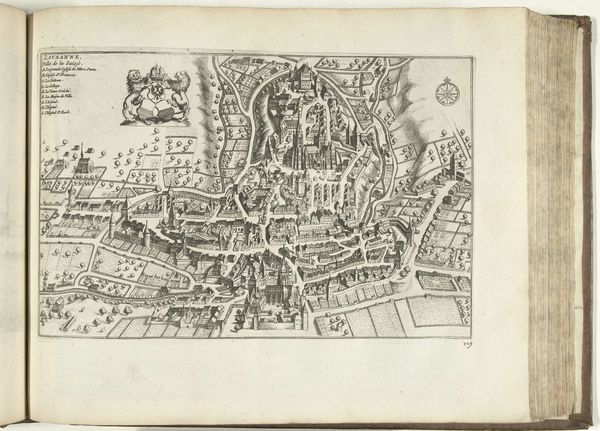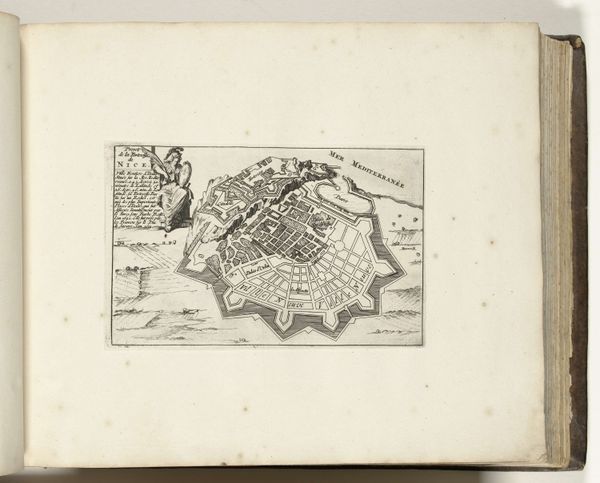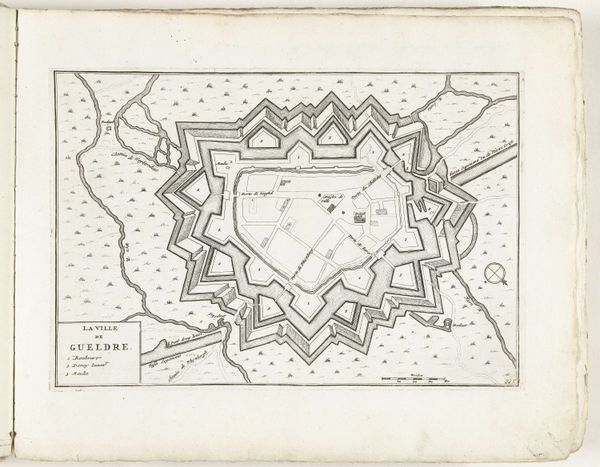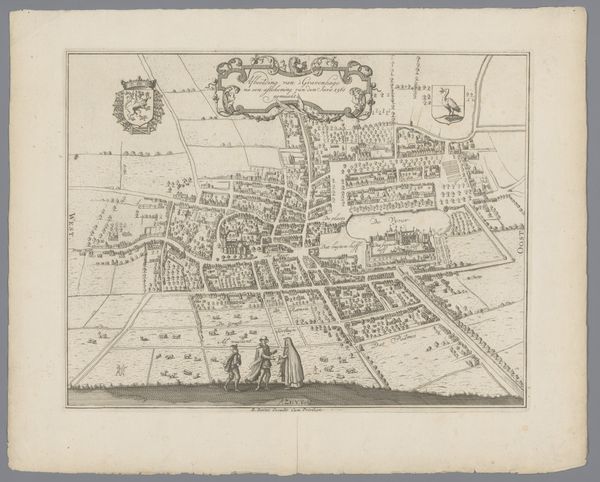
print, paper, engraving
#
dutch-golden-age
# print
#
paper
#
cityscape
#
engraving
Dimensions: height 155 mm, width 232 mm
Copyright: Rijks Museum: Open Domain
Curator: This engraving, dating from 1632, is titled "Plattegrond van de stad Hoorn," a Dutch cityscape currently held in the Rijksmuseum collection. It’s printed on paper. What strikes you about it? Editor: Initially, the precision is compelling. Look at the rendering of the streets and waterways; everything appears neatly ordered. There's a clarity and starkness, in how the artist has rendered it in blacks and whites, a real elegance to its lines and form. Curator: These city maps in the Dutch Golden Age were far more than geographic records; they spoke to Hoorn’s civic pride and mercantile power. Notice the detailed coats of arms and decorative cartouches. These were symbols reinforcing the city’s identity. Editor: I'm drawn to how the urban layout seems constrained by the coast. You see a tangible tension between the built environment and the natural world—a dialectic played out in sharp lines. This restriction and adaptation tell such a deeper story, too. Curator: Precisely! Hoorn was a major port, and the Zuiderzee—the current-day IJsselmeer—was its lifeline. This map presents Hoorn as both secure and thriving. The surrounding bodies of water, dotted with ships, signal this trade. The gridded interior alludes to its controlled structure of society. Editor: There’s something almost sterile in its perfection though, don't you think? Every space clearly defined. I wonder, does this rendering of civic pride erase something of the everyday life, of chaos and vitality that the space would hold? It offers an intriguing tension. Curator: I think it attempts to show control over what must have felt, even then, very uncontainable. But indeed the real tension comes from that omission – that which isn’t depicted. Consider its function and how it aimed to promote a message. A statement rather than a neutral depiction of a time. Editor: That's the beauty of returning to pieces like this, though. Looking past the literal representation, and discerning the unstated, unrepresented perspectives it also creates! Thank you for guiding us, truly insightful. Curator: And thank you for your perspicacity in drawing out some unseen parts! A pleasure.
Comments
No comments
Be the first to comment and join the conversation on the ultimate creative platform.
